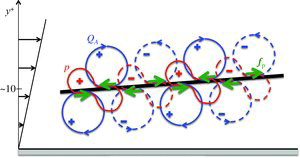Figures & data
Figure 1. Skin friction coefficient Cf as a function of the Reynolds number ReH for two Weissenberg numbers, WiH = 4 (![]()
![Figure 1. Skin friction coefficient Cf as a function of the Reynolds number ReH for two Weissenberg numbers, WiH = 4 (Display full size) and WiH = 30 (Display full size). Lines indicate correlations for laminar (· · · · · · · ·, Cf = 12/ReH) and turbulent (– – – –, Cf = 0.073Re− 1/4H [Citation11]) Newtonian channel flow, and for MDR (——, Cf = 0.42Re− 0.55H [Citation12]); Newtonian solutions are also included (). Unlike for Newtonian flows, the skin friction of viscoelastic flows at sufficiently high Weissenberg number departs from the laminar correlation at subcritical Reynolds number and then smoothly transitions to the MDR asymptote.](/cms/asset/c532a10a-1e1a-4f03-ac7f-e7c4fe154e77/tjot_a_952430_f0001_c.jpg)
Figure 2. Contour of the normalised polymer extension Cii/L on selected planes and instantaneous isosurface of the second invariant QA of the velocity gradient tensor in the lower half of the channel for the subcritical case ReH = 1000 and WiH = 4; QA = 0.1 (red) and QA = −0.1 (cyan). Trains of mostly spanwise cylindrical QA structures of alternating sign form around thin sheets of large polymer extension.
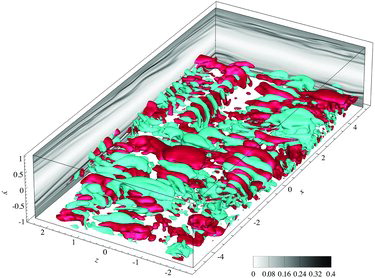
Table 1. Parameters used for the three viscoelastic and the Newtonian cases considered here. For all simulations, the FENE-P model is used with the maximum polymer extension parameter L = 200 and β = 0.9.
Figure 3. Pressure rms as a function of y+. (a) Total pressure for the Newtonian case at ReH = 6000 ( ![]()
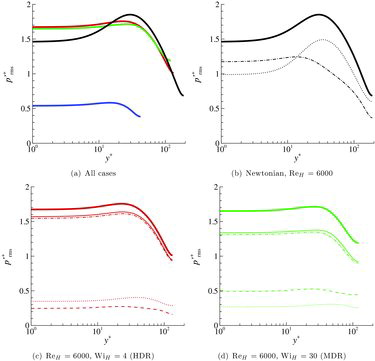
Figure 4. (a) Ratio of the polymeric p′p to the inertial p′rs pressure rms as a function of y+. (b) Ratio of the slow p′s to the inertial p′rs pressure rms as a function of y+. Same colour labels as in .
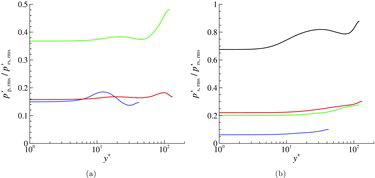
Figure 5. (a) and (b) Streamwise production terms ( – – – – ) and
( ——— ) as a function of y+. The polymer contribution is positive, indicating a transfer of energy from the polymers to the turbulence. (c) Wall-normal and spanwise production terms
( · · · · · · · · ) and
( — · — ) as a function of y+. In this case, energy is transferred from the turbulence to the polymers, but the levels are much lower than in the streamwise direction. Same colour labels as in .
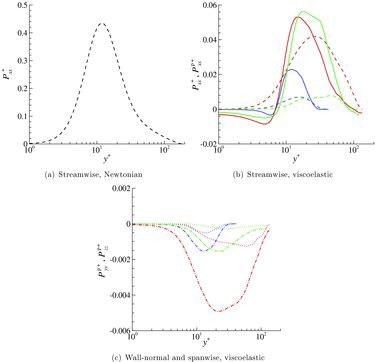
Figure 6. Streamwise pressure–strain component Φ+xx as a function of y+ obtained from the different pressure contributions: p′r ( — · — ); p′s ( · · · · · · · · ); p′p ( – – – – ); p′rs = p′r + p′s (———); p′rsp = p′r + p′s + p′p ( ![]()
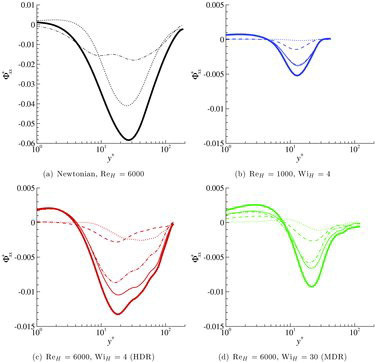
Figure 7. Wall-normal pressure–strain component Φ+yy as a function of y+ obtained from different pressure contributions. Same line style as in and same colour labels as in . Φyy is positive in most of the domain indicating an energy transfer to the wall-normal component.

Figure 8. Spanwise pressure–strain component Φ+zz as a function of y+ obtained from the different pressure contributions. Same line style as in and same colour labels as in . Φzz is positive everywhere indicating an energy transfer to the spanwise component.
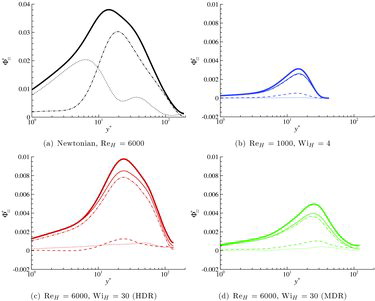
Figure 9. Production terms ( – – – – ) and
( ——— ) of Reynolds shear stress
as a function of y+. Same colour labels as in . Both terms cancel each other in the viscoelastic cases, explaining the very low levels of Reynolds shear stress observed.
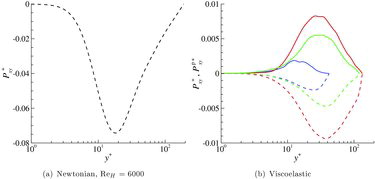
Figure 10. Pressure–strain component Π+xy as a function of y+ obtained from the different pressure contributions: p′r ( — - — ); p′s (· · · · · · · ·); p′p ( – – – – ); p′rs = p′r + p′s ( ——— ); p′rsp = p′r + p′s + p′p ( ![]()
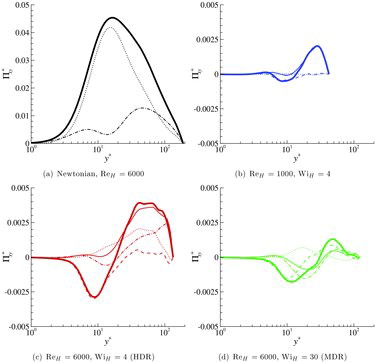
Figure 11. Instantaneous contour of the polymer stress component Txx and isolines of QA (dash lines represent negative values) in an plane for ReH = 1000 and WiH = 4. The flow is from left to right and the dashed box represents the region plotted in the next two figures.

Figure 12. Instantaneous contour of the polymeric pressure contribution pp and isolines of QA (dash lines represent negative values) in an plane for ReH = 1000 and WiH = 4. The region plotted corresponds to the dashed box in . A clear correlation between pp and QA is visible.
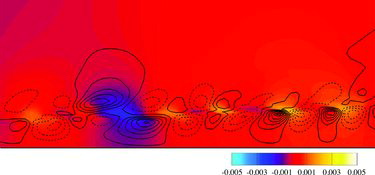
Figure 13. Instantaneous contour of the inertial pressure contribution prs and isolines of QA (dash lines represent negative values) in an plane for ReH = 1000 and WiH = 4. The region plotted corresponds to the dashed box in . Unlike the previous figure, no clear correlation between prs and QA is visible.
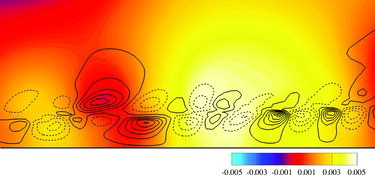
Figure 14. Schematics of the typical structures observed around thin sheets of large polymer extension (black line) in the near-wall region: second invariant of the velocity gradient tensor QA (blue), pressure p (red) and polymer body force (green). Dotted lines indicate a negative value.
